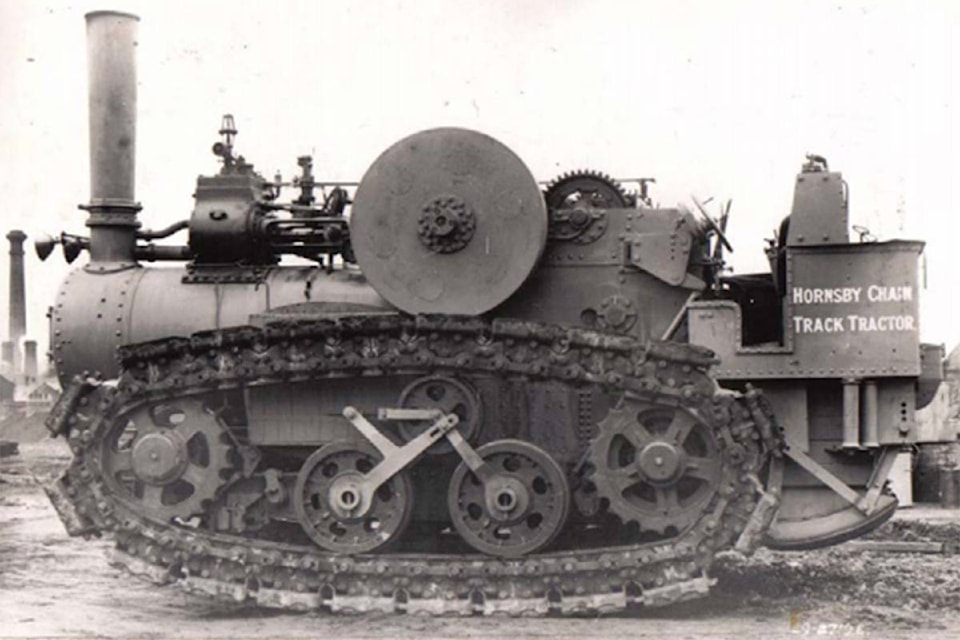The historic Hornsby Crawler is one step closer to having a permanent home in Coal Harbour.
The Regional District of Mount Waddington moved the Hornsby Crawler, which is a one-of-a-kind custom built steam crawler that was inspired by the Yukon Gold Rush and used in the forestry industry, to its home in Coal Harbour in 2013, which is a community close to its historical area of operation.
“I have been working for some time to complete the planning and construction of a shelter at Coal Harbour for the Hornsby Crawler and, due to several factors including my absence from work during part of 2017 while on sick leave and the failure of an early design proposal to yield a viable proposal, we are significantly behind schedule,” explained Pat English, Manager of Economic Development, at the Regional District of Mount Waddington (RDMW)’s July 17 board meeting.
English submitted a special report to the board of directors requesting approval of a contract exceeding $50,000 for the construction of the main shelter.
“Initial funding for this initiative was primarily provided by the BC Heritage Fund and the terms of the funding required us to substantially complete construction contracts for the project and file a financial report by July 25,” explained English.
He said he consulted with Karsten Construction regarding the project because of their expertise in designing and building post and beam structures.
“In view of the approaching funding deadline and the delays already encountered on this project, and given the expertise provided by Karsten, I am requesting approval from the Board for the following resolution: That the issuance of a contract to Karsten Construction for $74,349.80 for the main shelter structure to house the Hornsby Crawler at Coal Harbour be approved,” said English.
The recommendation was approved by the board.
“It should be noted that the original project compiled was based on best guess estimates made to satisfy a proposal call from the funding agency on a very short timeline. These estimates have subsequently been shown in most cases to be inadequate,” said English.
He also noted that further work will be needed to complete the project, including the installation of a roof, interior and exterior siding, and landscaping.
English explained that calls for proposals to undertake the final phases of project development will only be issued following completion of the current work and development of a final budget that also addresses funding sources.
“As the board might imagine this has been a very frustrating project to work on, delays, cost overruns, inability of contractors to respond quickly,” said English, adding “We have work going on right now on the foundation, we have moved the crawler onto the existing pad so there has been some slow progress.”
English said that they have filed the report with the BC Heritage Fund and met their deadline for filing and “I believe we have met all of their criteria, but none-the-less it has been frustrating.”
The Hornsby Crawler is the only surviving example of Roberts Hornsby’s ‘chain track” steam crawler in North America, which was a pre-World War One forerunner to the army tank. It was adapted for local industry through its use after 1928 by the Port Alice pulp and paper mill to haul pulp along Holberg Inlet. The Crawler fell into disrepair after it was barged to Apple Bay c.1950.
